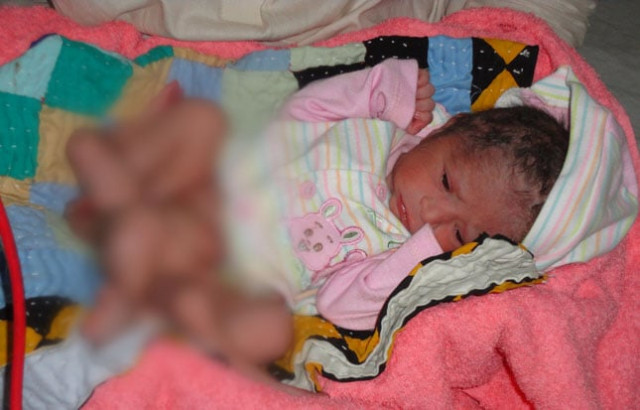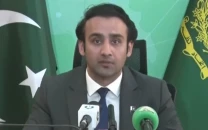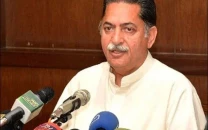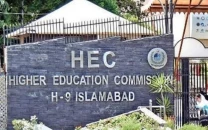Doctors claim baby does not have six legs, but is a conjoined twin
Sheikh plans to name his son Umar Farooq and is hopeful that he will make it through the surgery.

On Friday, Imran Sheikh and his wife became the proud parents of a baby boy with six legs.
As the news of this baby and his legs spread like wildfire, a large crowd lined outside the hospital in Sukkur to catch a glimpse.
As the frenzy increased, the anxious parents decided to take their son home.
With a little help from the family and the Baitul Mal, Sheikh brought his son to Karachi on Monday for a check-up at the National Institute of Child Health (NICH). After an initial physical assessment, the doctors felt that the baby was a conjoined twin with a case of parasitic conjunction, also known as unequal conjoined twins when a twin embryo begins developing in utero but the pair does not fully separate and one embryo maintains dominant development at the expense of the other. Unlike conjoined twins, one ceases development during gestation and is vestigial to a mostly fully formed, otherwise healthy individual twin.
According to NICH Director Dr Jamal Raza, the baby was stable when he arrived in Karachi and was being kept in the Surgical-Intensive Care Unit as newborns were at a high risk of developing infections.
While talking to the media, Dr Raza clarified that the baby did not have six legs – he had two legs and the other four belonged to the other twin. “Operating on such a baby is not an easy task as proper assessments need to be done first,” he said. “We need to figure out whether the baby has his twin’s limbs or his own. We also need to consider how much the internal organs have developed as the latter could complicate matters and decrease the baby’s chances of surviving.” He added that a team of five surgeons was assigned to the case and was carrying out initial assessments which included MRIs, ultrasounds and blood tests.
The tests and assessments are expected to take two days, however if they come across any complications, the doctors will have to do specialised tests which may take longer. Dr Raza explained that if they found internal organ tissues of the second twin in the baby it would make surgery much more difficult as it was not possible to separate internal organs. He added that there was no need to rush into surgery as the baby was breathing and his condition was steady.
“Conjoined twins are not genetic, they are rare cases. There is one in every 100,000 patients and the survival rate is low,” he said. “There are variations too – the twins joined at the head are craniopagus where a parasitic head is attached to the head of a fully developed baby, twins who are joined near the occipital region are occipitalis and the twins joined in the parietal region are called parietalis.”
While talking to The Express Tribune, Sheikh said that he was accompanied by his aunt and cousin as his wife was unable to travel because of the caesarean delivery. He said that he was married to his cousin and they were blessed with their first child after four years of marriage.
He added that he hoped his son, whom he planned to name Umar Farooq, would make it through the surgery.
The Baitul Mal has been instrumental in giving Sheikh and his family both emotional and financial support. When his child was born, he did not have money or resources to come to Karachi for a medical check-up. The Baitul Mal arranged for Sheikh and the baby’s transport and living arrangements. According to Dr Adnan Majeed, the director of Baitul Mal Sindh, they had given Sheikh Rs50,000 for his personal expenses in Karachi and will give a cheque for Rs0.6 million to NICH.
Published in The Express Tribune, April 17th, 2012.



















COMMENTS
Comments are moderated and generally will be posted if they are on-topic and not abusive.
For more information, please see our Comments FAQ